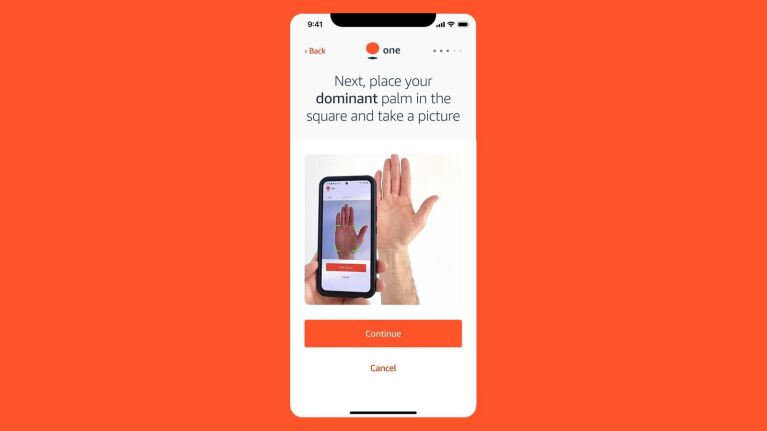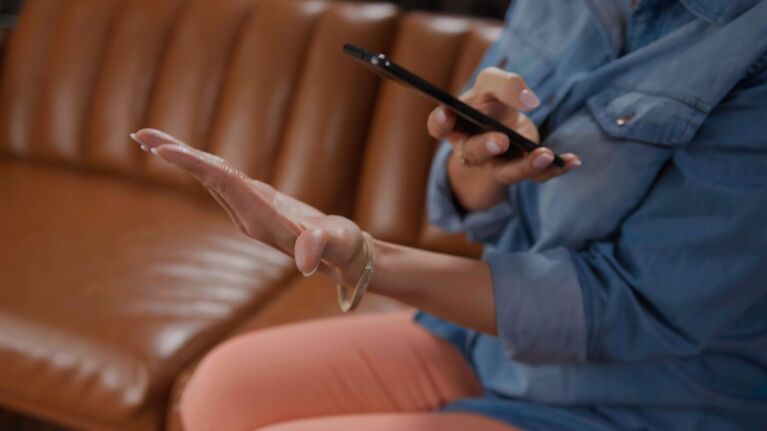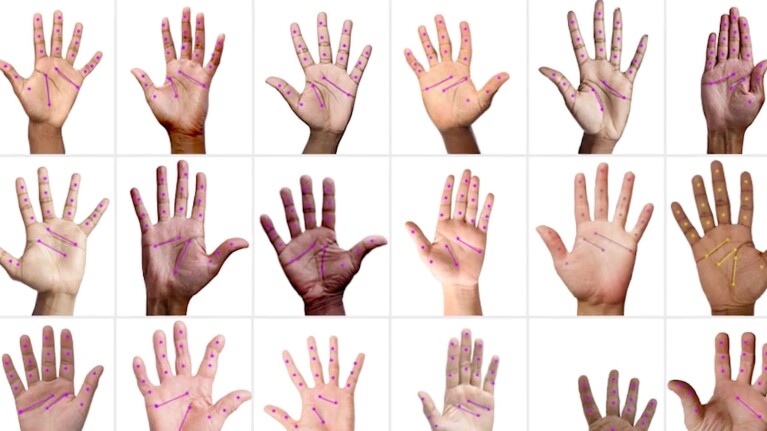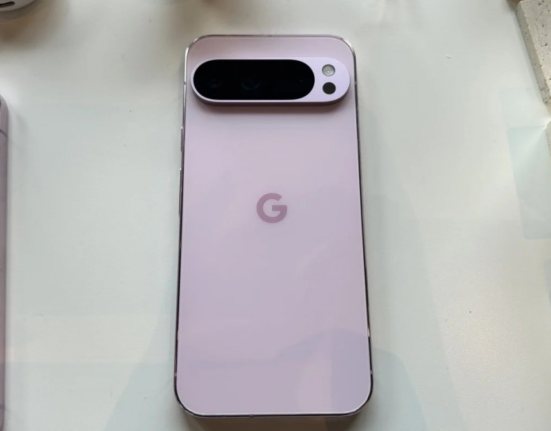Amazon (NASDAQ: AMZN) is simplifying its palm-scanning payment system, Amazon One. A new app eliminates the need for in-store enrollment, allowing users to register with a simple phone picture of their palm.
This update aims to make frictionless payments even easier, as announced on March 28.
While this promises expedited checkout experiences, cybersecurity experts raise security concerns regarding the collected biometric data.
Table of Contents
One-click enrollment
Previously, users needed to visit an Amazon One terminal to link their palm to their account.
The new app streamlines the process, enabling enrollment from anywhere with an internet connection.
This could be a notable benefit for retailers utilizing the technology, potentially leading to faster customer onboarding and smoother checkout flows.
Security concerns come to light
However, security specialists warn that palm prints, similar to fingerprints, are unique identifiers.
Critics argue that giving Amazon access to this palm scan data could have unforeseen consequences down the line, such as misuse or data breaches.
Amazon emphasizes that user privacy remains a top priority. The app encrypts palm images before transmitting them to secure servers.
They further claim the app is incapable of storing photos on user devices.
Despite these assurances, some users remain wary. The volume of data Amazon collects on its users is already causing disagreement.
Early adopters give Amazon One a thumbs-up
On the other hand, early adopters report positive experiences.
According to Amazon, the app has been utilized over 8 million times, with over 80% of users opting for its repeated usage at Amazon and Whole Foods Market stores.
The system itself appears efficient, offering payment, age verification, and even loyalty rewards – all with a simple scan.
The palm of your hand holds the answer
Whether the convenience offered by Amazon One outweighs privacy concerns is a personal decision for each user.
As Amazon One expands its reach to more stores and locations, the conversation surrounding palm-scanning technology is likely to continue.
This innovative approach to payment raises important questions about the value we place on both ease of use and data security.
Tech enthusiasts and privacy advocates alike will be watching closely to see how this technology evolves and how consumers ultimately weigh convenience against control.

Where generative AI comes in
In the decades I have spent studying, teaching, building, and training deep learning models, I have learned one thing: To be highly accurate, systems need a lot of good data. But when was the last time you’ve seen an image of a human palm? This left us in a pickle: How were we going to train a system where accuracy is paramount when we only had a small amount of palm data?
That’s when we decided to use generative AI. Generative AI is a subset of traditional machine learning powered by models trained on billions of data points from books, articles, pictures, and other sources. These include large language models (LLMs) like ChatGPT and “multi-modal” models trained on inputs like text, images, video, and sound. We used generative AI to create a “palm factory”—producing millions of synthetic images of palms—to train our AI model.
The industry term for this computer-generated information is “synthetic data,” new data created by the AI to replicate the breadth and variety of real data as closely as possible. This was pioneering work that happened years before the current generative AI craze started dominating conversations around the world.
Amazon One: A Touchless Future with Palm Recognition
Amazon One’s palm-recognition app offers a glimpse into a future where contactless payments and identification are the norm. This innovative technology uses the unique characteristics of your palm to streamline everyday interactions. Whether breezing through checkout lanes or entering secure locations, Amazon One promises convenience and security. However, as with any new technology, questions about privacy and data security remain to be addressed. Overall, Amazon One represents a significant step towards a more touchless and potentially more efficient future, but its long-term impact will depend on user adoption and addressing any lingering concerns.
New AI innovation powers highly accurate identity matching

Amazon One was developed using generative AI to create synthetic palm images, which were critical in training our machine learning models. AI also powers our latest innovation—the ability to match a camera phone photo with near-infrared imagery from an Amazon One device—while still maintaining a highly accurate and secure service. When a customer who signed up for Amazon One via the app hovers their palm over an Amazon One device the first time, our AI system is able to compare and match the palm and vein imagery captured by the Amazon One device with their camera phone photo, and only at this time is enrollment considered complete.
How do we do this?
Amazon One looks at both your palm and its underlying vein structure to create a unique numerical, vector representation—called a palm signature—for identity matching. To ensure Amazon One continues to deliver the same accuracy (99.9999%), our new AI innovation compares vector representations of palm images from the Amazon One app with the vector representation of palm and vein images from an Amazon One device. This allows us to confirm that the person hovering their palm over the Amazon One device is the same who signed up for the service using the app.
Designed to protect customer privacy and data security

Palm images taken via the Amazon One app are encrypted and sent to a secure Amazon One domain in the AWS cloud. To maintain our high bar for customer privacy and data security, these images cannot be downloaded or saved to your phone, and the mobile app includes additional layers of spoof detection. Customers love the convenience of Amazon One, and retailers and other businesses appreciate the fast, seamless, and secure experience it provides.
Synthetic data boosts accuracy of Amazon One
Training Amazon One on millions of synthetically generated images of the palm and the vessels underneath allowed us to boost the system’s accuracy. To begin with, it quickly generated hands reflecting a myriad of subtle changes, like varying illumination conditions, hand poses, and even the presence of a Band-Aid. But that’s not all. The images were also automatically “annotated,” which is normally a long and laborious process. This saved time and allowed us to move faster, as we didn’t have to label the pictures and tell the computer that it was looking at the pattern lines of your palm, a scar, or a wedding band.
We also trained our system to detect fake hands, such as a highly detailed silicon hand replica, and reject them. Amazon One has already been used more than 3 million times with 99.9999% accuracy. The combination of the palm surface and subcutaneous images allowed us to build a system that’s 100 times more accurate than two irises.

By leveraging generative AI and synthetic data, we were able to solve a problem that’s much harder than, say, using your face to unlock your smartphone. That’s because if your face is on your phone, it already knows who you are and just verifies that it is you. We call this a one to one mapping. With Amazon One, we don’t know who you are when you put your hand over the scanner. We need to identify you from other people, and do it fast. And if you are not enrolled, we also need to be able to say, you’re not in the system. Amazon One does this and much more.
We have already expanded the applications of Amazon One beyond payment to loyalty linking and age verification—read about our work with customers like Panera and Coors Field.
Amazon One was also designed to protect customer privacy—the system operates beyond the normal light spectrum and cannot accurately perceive gender or skin tone. Amazon One also does not use palm information to identify a person, only to match a unique identity with a payment instrument.
Where Can You Use Amazon One
Amazon One is gaining traction across various locations. Here are some of the places you might encounter it:
- Restaurants: Pay for your meal with a simple wave of your hand. No more waiting for the check or splitting bills at the table.
- Grocery Stores: The Amazon One app can be a lifesaver at stores like Whole Foods, allowing for a quick and hygienic checkout experience.
- Retail Stores: Stores like Amazon Go and other partner retailers might integrate Amazon One for a grab-and-go shopping experience.
- Venues and Events: Stadiums, airports, and concert venues can leverage Amazon One for contactless entry and age verification at bars.
Steps to use Amazon One
Step 1: Download the App
Grab the Amazon One app on iOS or Android.
Step 2: Create a Profile
Set up your profile with basic information.
Step 3: Capture Your Palm
Use your phone’s camera to take a high-quality picture of your palm.
Step 4: Link Payment
Securely connect your preferred payment method.
Step 5: Verify at Kiosk
Visit an Amazon One kiosk for a quick final verification step.
Step 6: Enjoy Contactless Payments
Hover your palm over the scanner to pay or identify yourself at participating locations.
Is Amazon One Safe to Use?
Security is a major concern with any biometric payment system. Here’s what Amazon assures users:
- Palm Image Encryption: Your palm image captured through the app is encrypted and securely transmitted to Amazon’s cloud storage.
- No Image Storage on Devices: The app doesn’t store your palm image on your phone, minimizing the risk of data breaches on personal devices.
- Matching with Secure Templates: Amazon One uses your palm’s unique characteristics to create a secure template, not an actual image, for matching purposes.
Who Uses Amazon One?
While convenient, Amazon One may not be for everyone. Here are some things to consider:
- Limited Locations: Currently, Amazon One is only available in select locations and partner stores.
- Privacy Concerns: Some users might be apprehensive about sharing biometric data like palm scans.
- Alternatives Exist: Contactless payments with credit cards or mobile wallets remain widely available.
Disclaimer ||
The Information provided on this website article does not constitute investment advice ,financial advice,trading advice,or any other sort of advice and you should not treat any of the website’s content as such.
Always do your own research! DYOR NFA
Coin Data Cap does not recommend that any cryptocurrency should be bought, sold or held by you, Do Conduct your own due diligence and consult your financial adviser before making any investment decisions!





Leave feedback about this